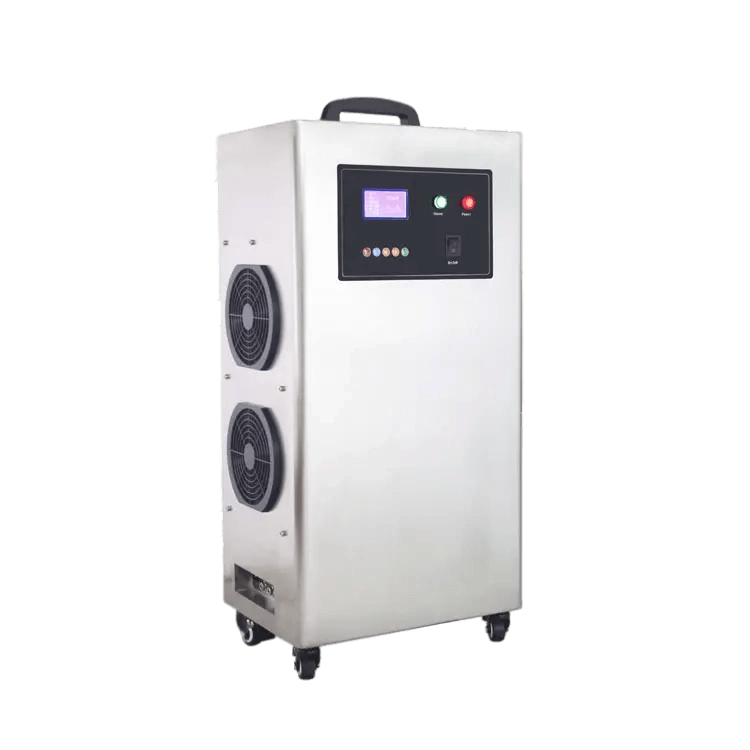
The Importance of Pool Water Quality
Swimming is a fashionable sport known for its many benefits such as joint relief, increased lung capacity, weight loss, and strengthening immunity. As our bodies come into direct contact with pool water, its cleanliness is vital for the swimmers’ health. The importance of water quality far exceeds our imagination. Good water quality can prevent diseases, protect our skin and eyes, and offer a comfortable swimming experience. For pool equipment, appropriate water quality ensures longevity. In essence, ensuring the quality of swimming water is everyone’s responsibility. But have you ever wondered what keeps the pool water in such a state? The answer is the pool chlorinator.
Scientific Basis of Chlorination
Chlorination is a process involving the use of chlorine to kill and suppress harmful microbial activities. Chlorination has broad applications, especially in drinking water and pool water treatment. Understanding the science behind it is crucial:
- Oxidation: Chlorine, a strong oxidant, can strip electrons from other substances. When chlorine contacts bacteria, viruses, or other microbes, it destroys their cell walls or membranes, rendering them inactive or dead.
- Protein Denaturation: Chlorine reacts with proteins in microbes, denaturing them and rendering the microbes inactive.
- DNA Damage: Chlorine can also react with microbial DNA, ensuring they cannot replicate or continue to grow.
- Formation of Disinfection Byproducts: Chlorine can react with organic or other chemicals in water, forming disinfection byproducts (DBPs) like trichloromethane, which might be harmful to health.
- pH Impact: Chlorine’s disinfecting effect is influenced by pH. Chlorine works best at neutral or slightly acidic pH levels.
- Continued Action: Compared to other disinfectants, chlorine has the advantage of continuous disinfection.
Components of a Pool Chlorinator
A pool chlorinator is a device used to automatically add chlorine to pool water. Here are its main components:
- Electrolysis Unit: The core of the chlorinator, converting salt (mainly table salt) into chlorine by introducing a low voltage to the passing water, inducing an electrolytic reaction.
- Control Panel: The operation center allows users to set chlorine production, working hours, and more. Modern panels might have LCDs displaying water quality and device info.
- Flow Sensor: This detects the flow of pool water. The electrolysis unit only functions when water flows at a certain speed.
- Saltwater Tank: Required if the chlorinator uses saltwater electrolysis.
- pH Monitoring & Regulation System: Advanced chlorinators might have this system for automatic pH level checks and adjustments.
- Cleaning & Backflush System: To avoid calcium build-up or sediment accumulation in the electrolysis unit, some chlorinators come with automatic cleaning or backflush systems.
- Safety Systems: Features like low salt indicators, low flow indicators, and overheat protection ensure the device’s safe operation.
- Housing & Peripheral Parts: Including the device shell, inlet and outlet, wires, and other connectors.
Working Mechanism of a Pool Chlorinator
Pool chlorinators offer an automated and continuous disinfection method. Here’s how they work:
- Saltwater Electrolysis: Modern chlorinators often use this technology. The pool has a certain salt concentration (usually table salt). When this water passes through the chlorinator’s electrolysis unit, table salt (NaCl) is broken down into chlorine gas (Cl2) and hydrogen gas (H2).
- Release and Dispersal of Chlorine: Once produced, chlorine dissolves and starts disinfecting harmful bacteria, algae, and pollutants.
- Flow Detection: Chlorinators ensure electrolysis only starts with water flow, ensuring even chlorine distribution.
- pH Adjustment: Electrolysis can affect pH levels, so advanced chlorinators might automatically adjust them.
- Automatic Cleaning & Backflush: To ensure efficient operation, many chlorinators come with systems to clear electrode accumulation.
- Safety Monitoring: Advanced chlorinators have features to ensure safe and optimal operations.
- Control & Monitoring: Users can set working parameters via the control panel. Some devices display current water quality and device info.
Future Chlorination Technologies
Pool chlorinators play a crucial role in maintaining pool water quality. We anticipate future chlorination technologies to be smarter and more automated, with AI possibly auto-adjusting electrolysis parameters for optimal chlorine quality and production.
As experts in chlorination technology, we’re committed to offering the most advanced and reliable solutions to our customers.

